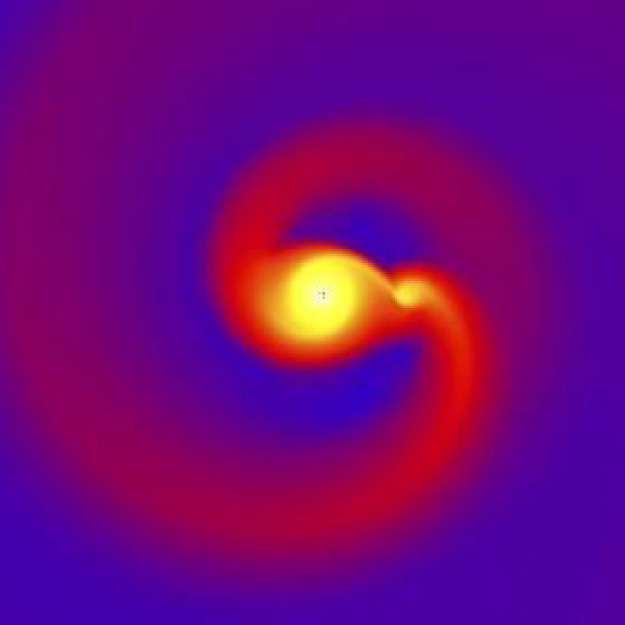Computational Astrophysics
 Many problems in theoretical astrophysics are too complex to be solved with paper
and pencil analytic methods. Computational astrophysics aims to overcome this challenge
by performing computer simulations, which utilize techniques from computer science
and applied mathematics. Numerical solutions for physical processes such as hydrodynamics,
chemical evolution, and radiative transfer are employed to understand a wide range
of phenomena including galaxy evolution, gas accretion onto black holes, stellar winds,
and circumstellar disks. These calculations are often run on massively parallel supercomputers
and are essential for interpreting a variety of astronomical data.
Many problems in theoretical astrophysics are too complex to be solved with paper
and pencil analytic methods. Computational astrophysics aims to overcome this challenge
by performing computer simulations, which utilize techniques from computer science
and applied mathematics. Numerical solutions for physical processes such as hydrodynamics,
chemical evolution, and radiative transfer are employed to understand a wide range
of phenomena including galaxy evolution, gas accretion onto black holes, stellar winds,
and circumstellar disks. These calculations are often run on massively parallel supercomputers
and are essential for interpreting a variety of astronomical data.
Computational astrophysicists at the University of Toledo use facilities such as the NASA Pleiades Supercomputer, the Ohio Supercomputer Center, the USP Laboratório de Astroinfomática (in Brazil) and local parallel computing systems to study topics including the emergence of the first stars and galaxies, the formation of supermassive black holes, the observational signatures of protostellar disks and exoplanets, and the formation and dynamics of massive star circumstellar disks and their stellar winds. If you are interested in becoming involved in this work please contact us!
Faculty working in Computational Astrophysics include: Prof. Emeritus Jon Bjorkman and Prof. Eli Visbal.


